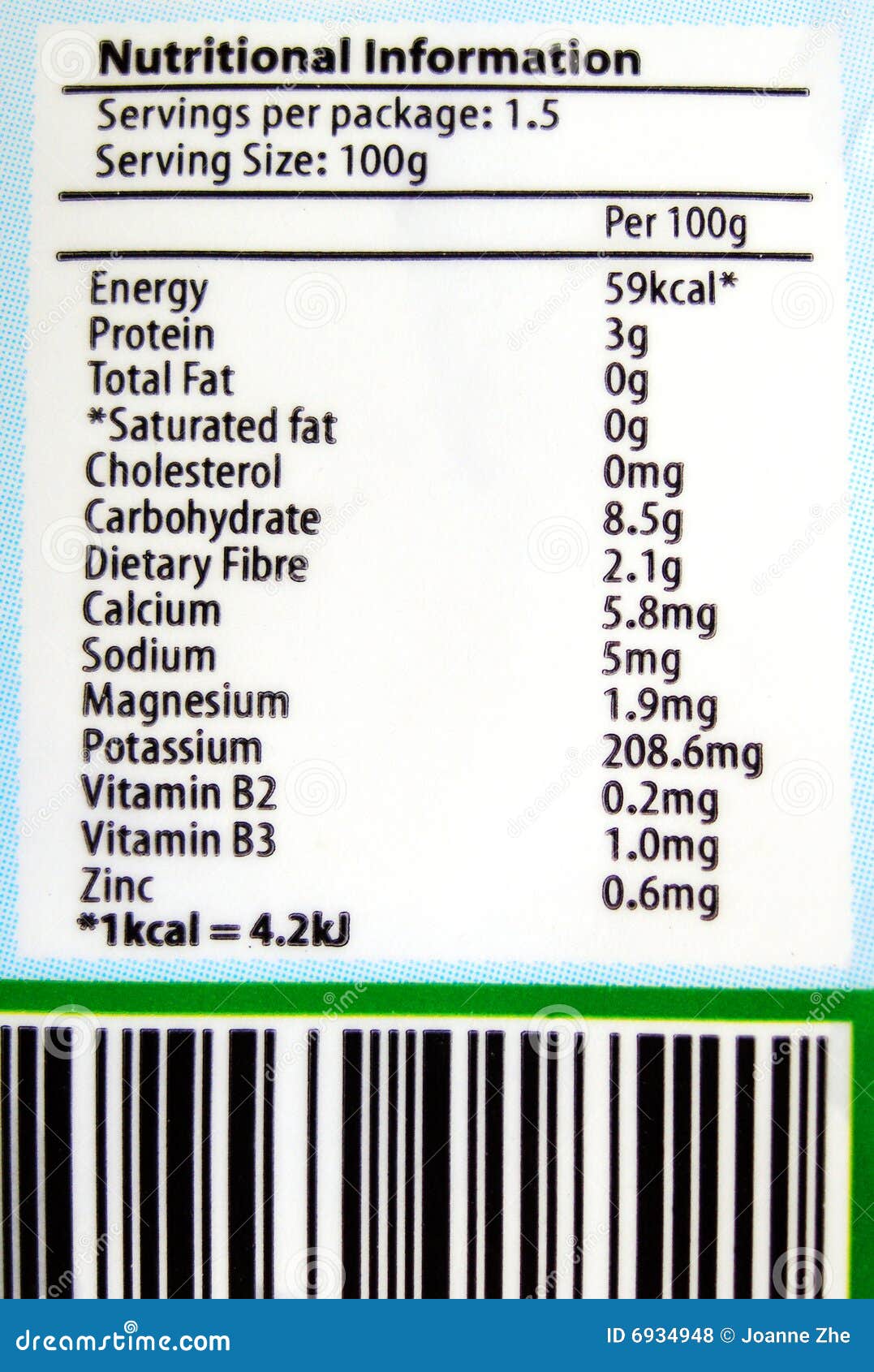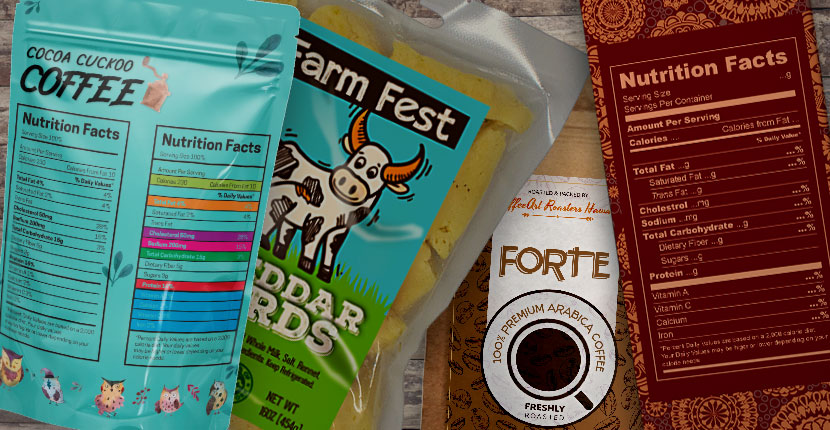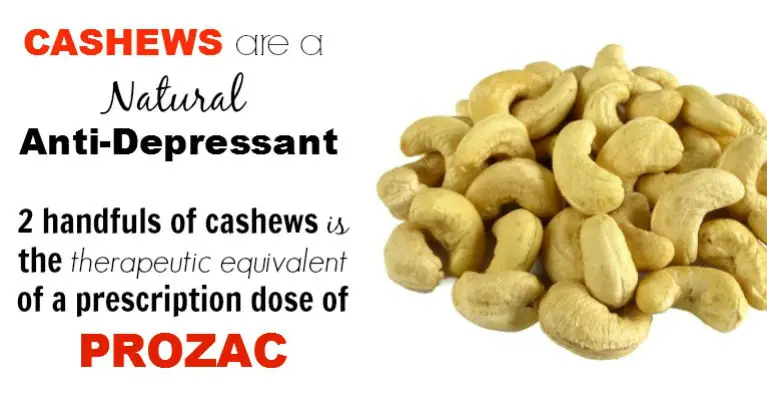44 vitamins and minerals on food labels
Interactive Nutrition Facts Label - Food and Drug Administration The human body also makes vitamins D and K. There are 14 vitamins that may be listed on the Nutrition Facts label: biotin, choline, folate, niacin, pantothenic acid, riboflavin, thiamin, and vitamins A, B 6, B 12, C, D, E, and K. Minerals are inorganic substances that are found naturally in soil and water. They are absorbed by plants, which are ... Vitamin, mineral daily requirements and good food sources - Harvard Health RDAs, food sources for selected vitamins and minerals October 1, 2013. Recommended Dietary Allowances (RDAs) for selected nutrients commonly displayed on food labels. Micronutrient: Vitamin A (mcg*/day) Vitamin C (mg**/day) Potassium (mg**/day) Calcium (mg**/day) Iron (mg**/day) For women >51 years: 700. 75. 4,700. 1,000-1,200. 8. For men >51 ...
Food labeling: MedlinePlus Medical Encyclopedia VITAMINS AND MINERALS Vitamin D, calcium, iron, and potassium are the only micronutrients required to be on the food label. Food companies can voluntarily list other vitamins and minerals in the food. PERCENT DAILY VALUE (% Daily Value) Many nutrients include a percent daily value (%DV).
Vitamins and minerals on food labels
Nutrition Facts Labeling — FDA Reader Macronutrients & Minerals (In order) Calcium Iron Phosphorus Iodine Magnesium Zinc Selenium Copper Manganese Chromium Molybdenum Chloride Potassium Vitamins and minerals must appear in the label if: They appear in a serving of the product When they are added as a nutrient supplement When a claim is made about them Using the Nutrition Facts Label and MyPlate to Make Healthier Choices The Nutrition Facts label's refreshed design ... vitamin D, and potassium are now listed and manufacturers must declare the amount in addition to the percent Daily Value for vitamins and minerals. Nutrition and Supplement Facts Labels: Questions and Answers … Vitamins and Minerals: Guidance for Industry . Additional copies are available from: Office of Nutrition and Food Labeling . Center for Food Safety and Applied Nutrition Food and Drug ...
Vitamins and minerals on food labels. Understanding Nutrition Facts on Food Labels - WebMD After fats, carbohydrates, dietary fiber, sugars, and protein are listed on the food label. These items are followed by specific nutrients in the food, such as vitamin A, vitamin C, calcium, and... Guidance for Industry: Nutrition and Supplement Facts Labels ... This guidance is intended for conventional food and dietary supplement manufacturers. It provides questions and answers on topics related to compliance with our final rules on the Nutrition Facts ... Vitamins and Minerals | Nutrition.gov Vitamins and Minerals Get the facts on vitamins and minerals, from A to Z. Food Sources of Calcium USDA, HHS View a list of common foods and drinks and the amount of calcium in a standard portion. Food Sources of Iron USDA, HHS View a list of common foods and drinks and the amount of iron in a standard portion. Food Sources of Potassium USDA, HHS Daily Value on the New Nutrition and Supplement Facts Labels Which Nutrients Are Required to Be Listed on the Nutrition and Supplement Facts Labels? The Nutrition Facts label must list total fat, saturated fat, trans fat, cholesterol, sodium, total...
Vitamins and minerals - Food and nutrition | NHS inform 30.04.2020 · Your body needs certain minerals to build strong bones and teeth and turn the food you eat into energy. As with vitamins, a healthy balanced diet should provide all the minerals your body needs to work properly. Essential minerals include calcium, iron and potassium. However, there are many more minerals your body needs to function, including: Vitamins and minerals for women | Office on Women's Health 17.02.2021 · Vitamins and minerals often work together in your body. It’s usually best to get your vitamins and minerals from many different types of food in all of the food groups. Fill your plate with fruits, vegetables, dairy, grains, and a variety of protein foods to build a healthy plate. Vitamins and minerals - Others - NHS check food labels and choose foods with less salt – where colour-coded labels are used, try to pick products with more greens and ambers, and fewer reds, for a healthier choice; choose tinned vegetables and pulses with no added salt; choose tinned fish in spring water rather than brine New Food Label Spotlight: Vitamins and Minerals In the updated label, that same section will jettison vitamin A and vitamin C (the FDA asserts, "In the early 1990's, American diets lacked Vitamins A and C, but now Vitamins A and C deficiencies in the general population are rare"), replacing them with vitamin D and potassium. Calcium and iron will remain on the label.
What's New with the Nutrition Facts Label | FDA Daily Values for nutrients have been updated, which may make the percent Daily Value higher or lower on the new Nutrition Facts label. As a general guide: 5% DV or less of a nutrient per serving ... How to know vitamins and minerals not listed in nutrition label? Minerals, vitamin D, and potassium Vitamins A and C will no longer be required on the FDA's Nutrition Facts labels (though manufacturers may choose to include them if they like), but Vitamin D and Potassium will. How to calculate percents of vitamins and minerals on nutrition labels? In the Nutrition Facts label, which vitamins and minerals are listed? Biotin, choline, folate, niacin, pantothenic acid, riboflavin, thiamin, and vitamins A, b6, b12, c, d, e, and K are among the 14 vitamins that may be stated on the Nutrition Facts label. Minerals are inorganic substances present in soil and water naturally. Interactive Nutrition Facts Label - Food and Drug Administration Vitamins are organic substances that are naturally present in many plant and animal products. People obtain vitamins from both the plant and animal products they eat. The human body also makes vitamins D and K. There are 14 vitamins that may be listed on the Nutrition Facts label: biotin, choline, folate, niacin, pantothenic acid, riboflavin, thiamin, and vitamins A, B 6, B 12, …
Vitamins (for Kids) - Nemours KidsHealth B vitamins in whole grains help your body make energy from food. Vitamins Hang Out in Water and Fat. There are two types of vitamins: fat soluble and water soluble. When you eat foods that contain fat-soluble vitamins, the vitamins are stored in the fat tissues in your body and in your liver. They wait around in your body fat until your body ...
PDF Interactive Nutrition Facts Label - Vitamins and Minerals Chart Interactive Nutrition Facts Label • March 2020 wwwaovnutritioneucation Vitamins and Minerals Chart 1 Vitamins. VITAMIN WHAT IT DOES. WHERE IT IS FOUND DAILY; VALUE* Biotin •Energy storage • Protein, carbohydrate, and fat metabolism Avocados • Cauliflower • Eggs • Fruits (e.g., raspberries)
Guidance for Industry: Nutrition and Supplement Facts Labels … This guidance is intended for conventional food and dietary supplement manufacturers. It provides questions and answers on topics related to compliance with our final rules on the Nutrition Facts ...
Where are the vitamins and minerals on a nutrition labels? The Nutrition Facts label may include the following 14 minerals: Calcium, chloride, chromium, copper, iodine, iron, magnesium, manganese, molybdenum, phosphorus, potassium, selenium, sodium, and zinc are some of the minerals found in the human body. On a nutrition label, how are ingredients listed?
Vitamins and Minerals: How Much Should You Take? - WebMD Jul 30, 2020 · With some vitamins and minerals, the upper limit is pretty close to the RDA. So it's easy to get too much. For example, a man who takes just over three times the RDA of vitamin A would get more ...
Vitamins Vs. Minerals—What’s The Difference? | GNC Vitamins and minerals are substances that our body needs to grow and function properly. They belong to a class of nutrients called “micronutrients.” Micronutrients refers to the fact that your body needs smaller amounts of them compared to the amounts it needs of the macronutrients: protein, carbohydrates, and fats. Let’s up the ante on your nutrition knowledge and learn a bit …
Displaying vitamins and minerals on your product labels - Xyris In the Show Components box select " all nutrients available in FoodWorks " from the dropdown box. Select the additional nutrients that you want to show. In this example, we are selecting calcium and iron. Click OK. Now, when you open the recipe's Label window, these nutrients are ready for you to select in the NIP tab.
Which vitamins and minerals are required on the new nutrition facts label? In the Nutrition Facts label, which vitamins and minerals are listed? Biotin, choline, folate, niacin, pantothenic acid, riboflavin, thiamin, and vitamins A, b6, b12, c, d, e, and K are among the 14 vitamins that may be stated on the Nutrition Facts label. Minerals are inorganic substances present in soil and water naturally.







Post a Comment for "44 vitamins and minerals on food labels"